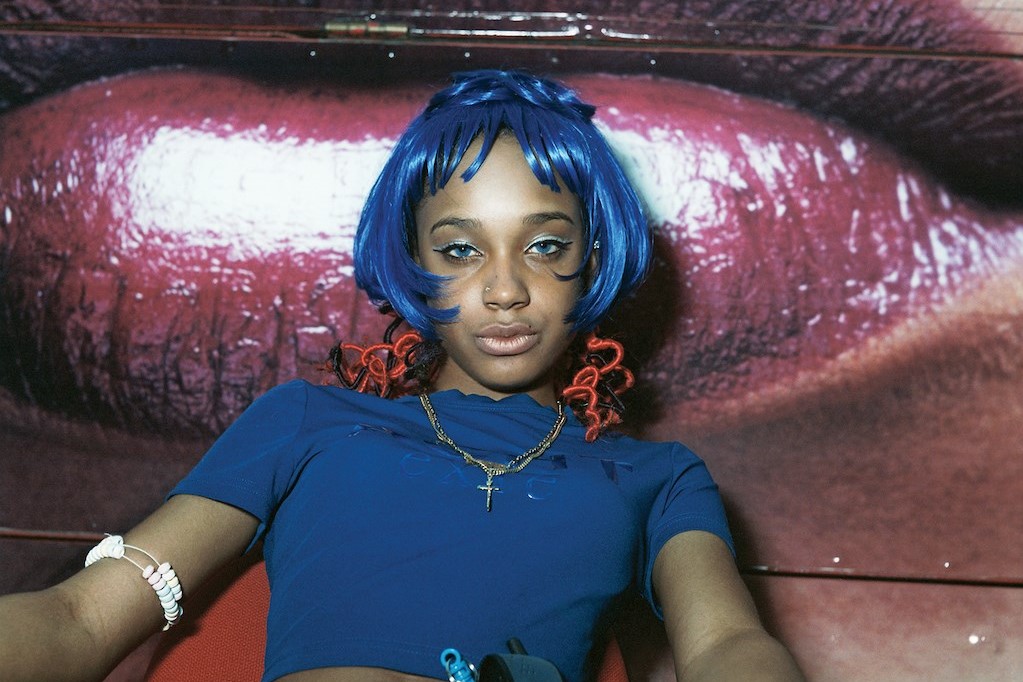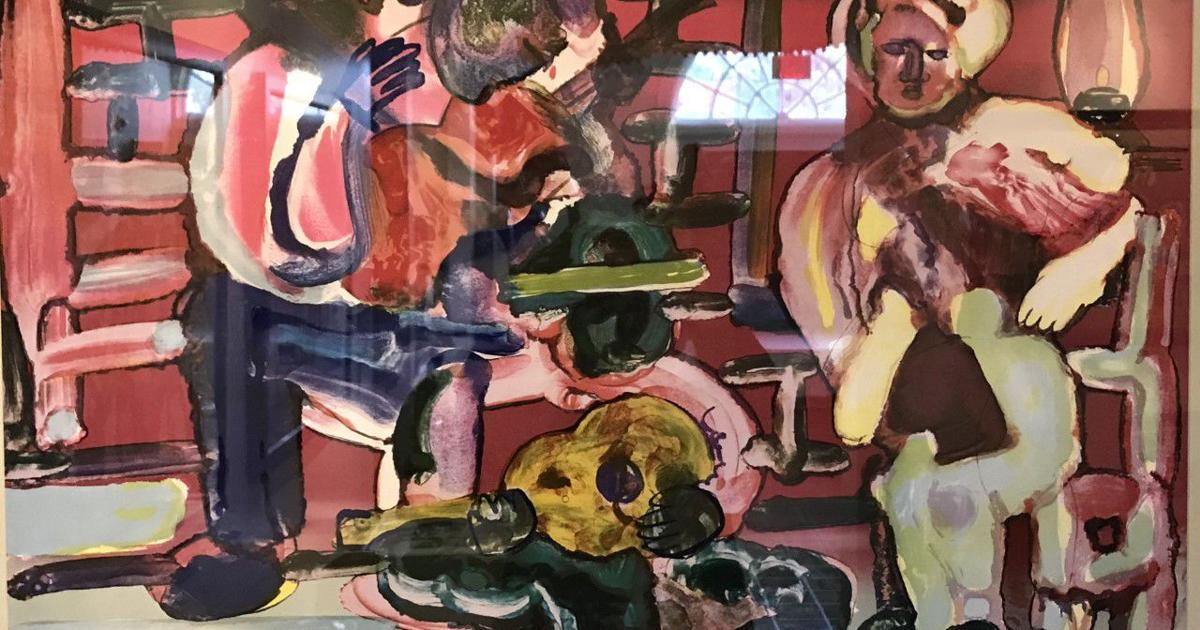Once in Two Moons
2017 - Textile (Textile)
106.68 x 106.68 cm
Laura Rokas
Like most of Laura Rokas’s hand-stitched works, Once in Two Moons was made while she sat in bed, imbuing the work with a tender sense of domestic intimacy. The scene’s dominant figure is a faceless woman whose blood red, dagger-like fingernails, polka dot jacket, and jet black hair resemble a sort of avatar of the artist. The figure surveys a chaotic scene that might be described as a “cute apocalypse” (a phrase Rokas says is characteristic of her work in general). The quilt features nearly fifty strange, and at times menacing, hand-embroidered elements that could be drawn from a spooky underworld: a two-headed ghost, a leathery snake, a voyeur in the clouds, and a cackling mouth with uneven teeth congregate amidst a catastrophic combination of weather conditions. Some of the other embroidered imagery is oddly specific and seemingly nonsensical, such as a pink flag stuck into an orange traffic cone, or a vehicle engulfed in flames. These images are part of Rokas’s personal lexicon that signify specific memories and events. For instance, the cop car belonged to Rokas’s friend and was set on fire while parked on the street in Oakland. Taking an even closer look, a cell phone peeking out of the woman’s pocket reads Friday the 13th—a superstitious day for many, and in particular for Rokas, as she was involved in a terrible accident on that date many years ago. Regardless of the meanings inscribed in Once in Two Moons , the work triggers a litany of questions about the choices we make day to day, and how much our understanding of it is influenced by the images we ingest, and the events we encounter.
Laura Rokas is a painter, ceramicist, and textile artist. Rokas’s practice embodies a spirit of dedicated amateurism characteristic of a generation that grew up figuring out how to make creative use of new technologies, the materials of the internet, and digital communication. Rokas’s approach is generally to produce something new by testing out very basic methods with whatever materials she’s drawn to. Both Rokas’s mother and sister are quilters, and she learned by watching them, listening to their stories, and asking questions. Rokas’s work incorporates her lived experience and remixes it with visual references, symbols, and themes drawn from pop culture, literature, and science fiction. In particular, she likes to rework familiar symbols because of their psychological power. The potency of her work comes from her ability to exploit and recontextualize familiar pop culture iconography in ways that unravel seemingly simple imagery. Rokas’s interpretations gravitate toward the uncanny, dealing with alternate realities, twins, doubles, and doppelgangers—the realm of “what if,” “what could have been,” and the just plain weird. And since Rokas never offers a Rosetta Stone to decode the work, the viewer is often left with more questions than answers, and that’s just fine with her.
Colors:
Related works sharing similar palette
» see more

© » KADIST
Benvenuto Chavajay Gonzalez
2013Jardín (2013) refers to environmental destruction, specifically the preponderance of disposable plastics, as well as Medellín’s long history of dangerous conflict; it was once considered the most violent city in the world because of the drug trafficking there...

© » ARTS EQUATOR
The working processes of artists: Tim De Cotta | ArtsEquator Thinking and Talking about Arts and Culture in Southeast Asia Articles Courtesy of Tim De Cotta October 18, 2019 In this video, LASALLE students Nicole Kessler and Marian Saturno speak to musician Tim De Cotta on his (many) musical influences, how he talks about social issues through music and how to keep your art pure...

© » ANOTHER
Uncovering Britain’s Groundbreaking Black-British Women Photographers | AnOther February 05, 2024 Text Elodie Saint-Louis Lead Image Eileen Perrier, ‘Untitled’ from the series Afro Hair and Beauty Show, 1998, from Shining Lights by Joy Gregory (ed.) (MACK, 2024) Courtesy of the artist and MACK In Shining Lights , the “first critical anthology to bring together the groundbreaking work of Black women photographers active in the UK during the 1980s and 1990s ”, a constellation of rarely-seen stars finally take their rightful place in the sky...
Related works found in the same semantic group
» see more

© » KADIST
Polina Kanis
2011In the seminal video Workout , Kanis looks at the phenomenon of exercise in public space—specifically aerobics exercises in parks around Moscow today—as a broader lens for thinking about generational change...

© » KADIST
Didem Pekün
2018The black-and-white projection, Araf by Didem Pekün, begins, as a lithe man stands high up in the middle of the grand, rebuilt 16th-century Ottoman bridge in Mostar, in Bosnia and Herzegovina...



